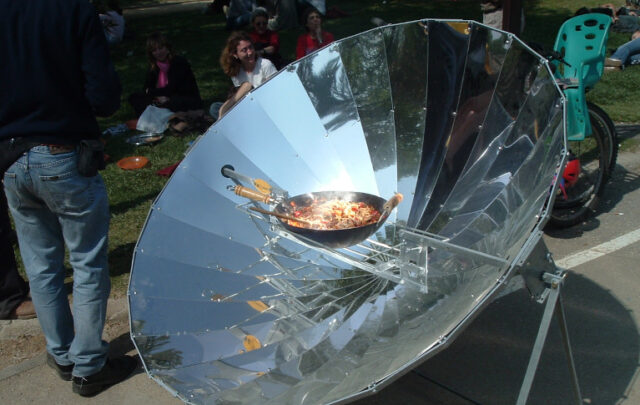NOTE: Images in this archived article have been removed.

Drilling rig image via shutterstock. Reproduced at Resilience.org with permission.
Last week, members of the media breathlessly reported—based on a new study published by West Virginia University (WVU) entitled A Geologic Play Book for Utica Shale Appalachian Basin Exploration—that the Utica Shale could hold more recoverable gas than the Marcellus, the largest shale gas play in the country. The “Play Book” provides an interesting roundup of geological data on the Utica and associated shale units. However the sensational claim that these units contain a mean resource of 782 tcf (trillion cubic feet) of “technically recoverable” gas, 1947% higher than the USGS estimate of 38.2 tcf made in 2012, has little credibility.
Of course, one can get any “technically recoverable” resource number one wants, depending on input assumptions. Critical assumptions for the gas estimate are:
- Area assigned to sweet spots and non-sweet spots.
- Drainage area of individual wells.
- Estimated Ultimate Recovery (EUR) of wells.
- Success ratio of wells.
Typically these are expressed as a range. In the case of the USGS assessment they are characterized as “minimum”, “mode”, “maximum” and “mean”, and in the WVU assessment variably, when they are stated, as “minimum, medium, maximum” and “minimum, mode, maximum”.
Given that “sweet spots” comprise 99% of WVU’s purported technically recoverable resources, only the sweet spot assumptions are reviewed below in a comparison between the USGS and WVU assessments.
Area assigned to sweet spots
Whereas the USGS assessment provides a quantitative estimate of prospective area, the WVU assessment provides only a map, with a much larger proportion of the total area assigned to “sweet spots” than the USGS.
| (Units are Acres) |
Minimum |
Mode |
Maximum |
Mean |
| USGS Total Area |
25,800,000 |
31,600,000 |
37,400,000 |
21,600,000 |
| USGS Sweet Spot Proportion |
0.09 |
0.21 |
0.50 |
0.27 |
| USGS Sweet Spot Area |
2,322,000 |
6,636,000 |
18,700,000 |
5,832,000 |
| WVU Assessment |
Not stated (map only) |
Drainage area of individual wells
The USGS assessment provides estimates of well drainage area which allows the calculation of the number of wells required (a mean of about 4.3 wells per square mile). The WVU assessment provides no information on its assumptions.
| (Units are Acres) |
Minimum |
Mode |
Maximum |
Mean |
| USGS Drainage area per well |
120 |
150 |
180 |
150 |
| WVU Assessment |
Not stated |
Estimated Ultimate Recovery (EUR) of wells
For the oil part of the WVU assessment, WVU at least provides some cumulative recovery curves to back up its oil EUR calculations. For the gas assessment the WVU assessment provides nothing more than a map of cumulative recovery of wells drilled to date, none of which have recovered more than 5 bcf (billion cubic feet) and most of which have recovered considerably less than 2 bcf. The WVU then assumes every successful well will have a “medium” expectation of recovering 7 bcf over the entire area it calls a “sweet spot”, and a “maximum” expectation of 30 bcf (25 times the USGS “maximum” estimate). Although there are certainly a few very good wells, this is wildly optimistic and unfounded based on production data to date. The comparison with the USGS is as follows:
| (Units are billion cubic feet) |
Minimum |
Mode |
Maximum |
Mean |
| USGS assessment |
0.2 |
0.6 |
1.1 |
0.619 |
| WVU assessment |
0.19 |
7.09 |
30.37 |
Success ratio of wells
Similarly the WVU assessment is optimistic on the success ratio of wells compared to the USGS:
| (Units are percent successful) |
Minimum |
Mode |
Maximum |
Mean |
| USGS assessment |
75 |
85 |
95 |
85 |
| WVU assessment |
90 |
95 |
99 |
Conclusions
The WVU assessment of technically recoverable resources in the Utica is incomplete as presented and wildly optimistic compared to the earlier USGS assessment and compared to likely well performance. Although the WVU report does provide a valuable roundup of pertinent geological data, its assessment of technically recoverable resources should not be viewed as credible.







